

|
|
|


|
|
1/10 Scale Electric Formula One Car:
Kyosho Espo Larrousse 90 - 4203
|
Released by Kyosho in 1990, the Espo Larrousse 90 Formula 1 Car - # 4203 - was based on the Lamborghini 3512 V12 engined car driven by Eric Bernard and Aguri Suzuki in the 1990 F1 season, finishing 6th overall in the Constructors' Championship with eleven points.
The Espo Larrousse Lamborghini Lola LC90 model came as an unassembled kit, with an unpainted polycarbonate Bodyshell, a servo operated Rotary Mechanical Speed Controller, Mega Outlaw 22T Stock Motor and one-piece plastic Wheels with semi-pneumatic rubber tires. A Radio System, Battery and Charger to be purchased separately.
Now considered rare, all the early 1990s Kyosho F1 RC models are much sought after by ardent collectors the world over.
Check out our Kyosho Archive for other F1 models.
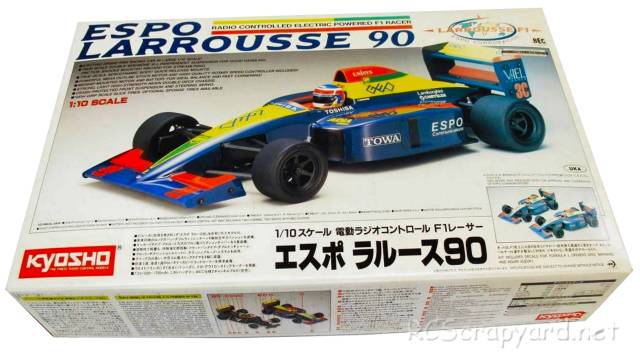
The 2WD model is based on a molded plastic double deck chassis, with front "crash-back" system incorporating two O-rings (previously used on a number of Schumacher models), A-arm wishbone suspension, with pushrod actuated coil spring over friction dampers, bevel gear type differential, gear reduction drive with dogbone drive-shafts and bushings.








|
|
|

★ Kyosho Espo Larrousse 90 - 4203 ★
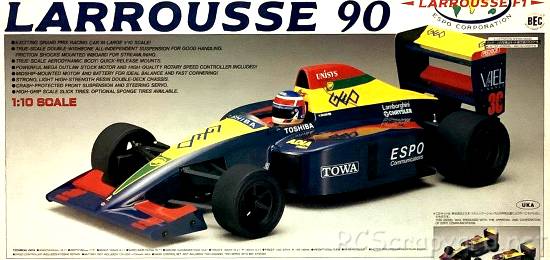
★ Kyosho Espo Larrousse 90 - Chassis ★
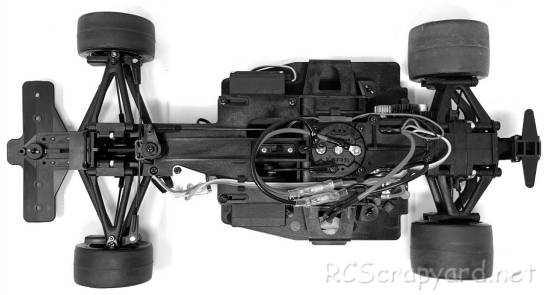
★ Kyosho Espo Larrousse 90 - Chassis ★
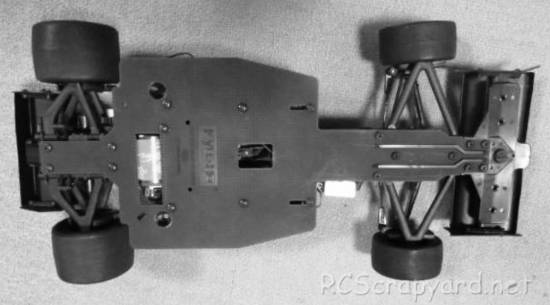
★ Kyosho Espo Larrousse 90 - Chassis ★

★ Kyosho Espo Larrousse 90 - Chassis ★
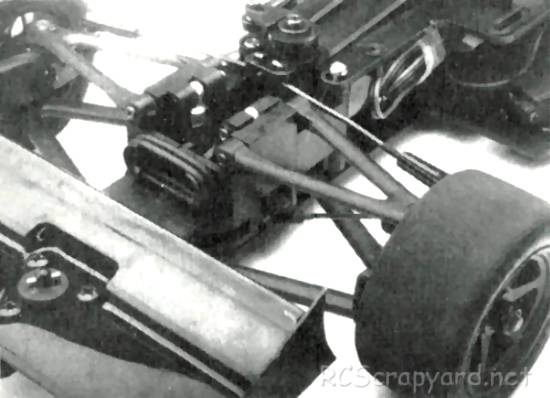
★ Kyosho Espo Larrousse 90 - Chassis ★
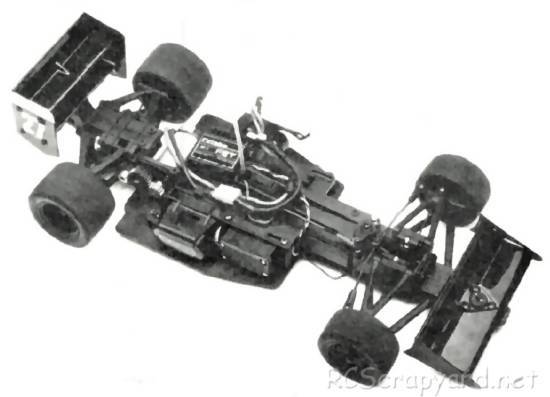
★ Kyosho Espo Larrousse 90 - Chassis ★
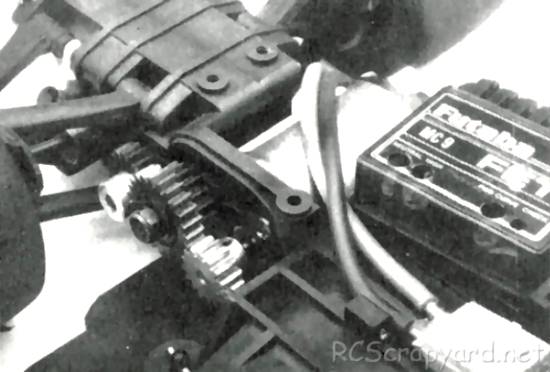
★ Kyosho Espo Larrousse 90 - Chassis ★
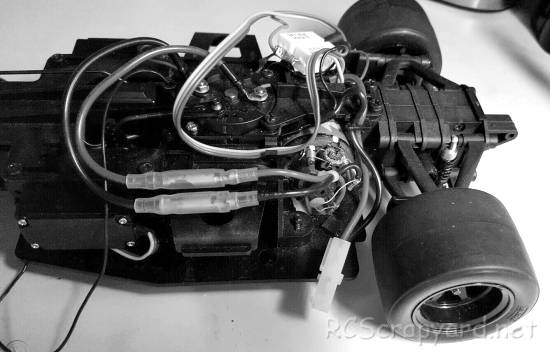
★ Kyosho Espo Larrousse 90 - Chassis ★
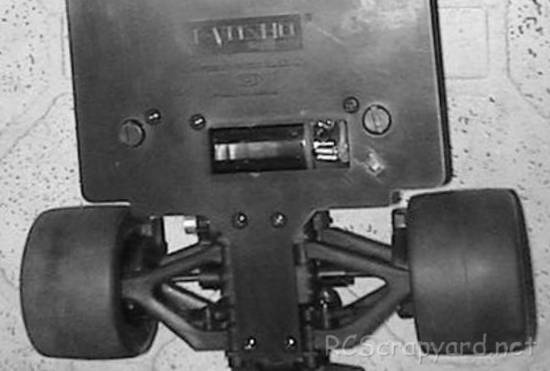
★ Kyosho Espo Larrousse 90 - Chassis ★
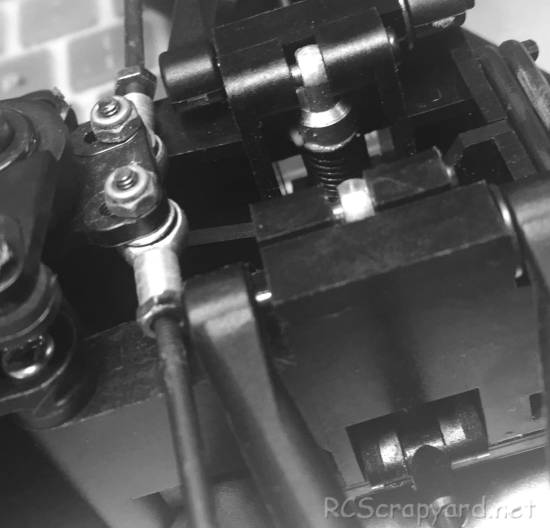
|
Buying a Used Radio Controlled Model
|
|
Manufacturers and Brands Catalogued, Listed and Reviewed by RC-Scrapyard.
At present, the RC Model Manufacturers, Brands and Distributors covered by us are: ABC Hobby, Academy, Acme Racing, Agama Racing, Amewi, Ansmann Racing, ARRMA, Team Associated, Atomic RC, Axial, AYK, Bolink, BSD Racing, Capricorn, Carisma, Carson, Caster Racing, Cen, Corally, Custom Works, Durango, Duratrax, ECX - Electrix, Exceed RC, FG Modellsport, FS-Racing, FTX, Fujimi, Gmade, GS-Racing, Harm, HBX, Helion, Heng Long, Himoto Racing, Hirobo, Hitari, Hobao, Hong-Nor, Hot Bodies, HPI, HSP, Intech, Integy, Jamara, JQ Products, Kawada, Kyosho, Losi, LRP, Maisto, Mardave, Marui, Maverick, MCD Racing, Megatech, Mugen, New Bright, Nichimo, Nikko, Nkok, Ofna, Pro-Pulse, Protech, PTI, RC4WD, Redcat Racing, RJ-Speed, Robitronic, Schumacher, Seben, Serpent, Smartech, Sportwerks, Step-Up, Tamiya, Team-C Racing, Team Magic, Thunder Tiger, Tomy, Top Racing, Traxxas, Trinity, Tyco, Vaterra RC, Venom, VRX Racing, WLToys, X-Factory, Xmods, Xpress, Xray, XTM, Yankee RC, Yokomo, ZD Racing and Zipzaps. |
|
Hints, Tips and Information How to Charge Rechargeable Batteries for Peak PerformanceNi-Cad (Nickel Cadmium) Batteries
1/ All Ni-Cad Batteries have to be Discharged soon after use. This is to avoid the dreaded "Memory" effect that on subsequent re-charges can cause a momentary drop in performance during a race. A simple discharger can be made from a car 12v bulb.
Ni-Mh (Nickel Metal Hydride) Batteries
1/ Never charge Ni-Mh batteries at a current higher than 4.5 amps. Although these batteries can give a higher voltage than Ni-Cad Batteries, they are much more sensitive and easy to damage if charged too quickly. |
|
Hints, Tips and Information
Tire Compounds
Way back in the early 1990s when I first got into RC, most of the off-road models available came with chunky hard compound block tires that gave little or no grip on grass or dirt tracks. On-road didn't have this problem as they were still using sponge tires that with a coating of wintergreen based tire additive before each race to improve grip. There was even one guy who swore, before every race, he dipped his wheels in a glass of light ale. |
|
RC Models:
|
Radio & Motors: |
Other
Accessories: |